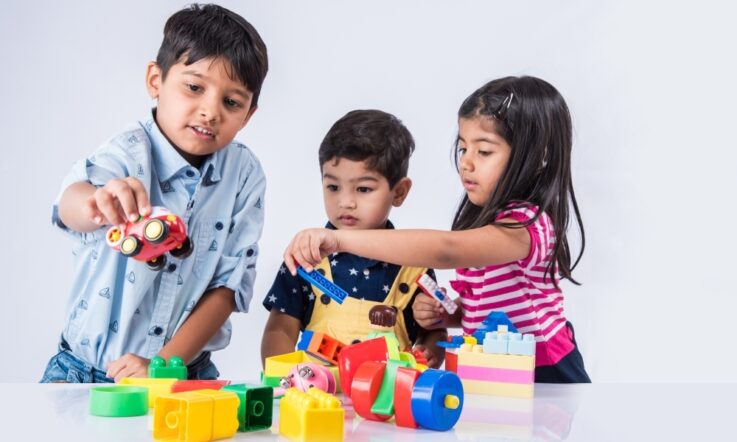Drama as a medium of learning can bridge gaps in student communication and create an opportunity for meaningful conversations and interactions between learners in the classroom.
Drama-Based Pedagogy (DBP) is born out of the US and structured on the belief that the teacher is the artist working with individual learners, having distinct personality traits owing to their diverse experiences in their respective social and cultural backgrounds (Dawson & Lee, 2014).
DBP is built over the framework that students will make dialogic meaning with the learning by incorporating all aspects of drama, like stage presentation, prop management, characterisation, costume design and make-up.
Science through drama has intrigued me ever since I read Kirk Dorion’s dissertation: An exploration of how a drama-based pedagogy can promote understanding of chemical concepts in 11–15-year-old Science students, (Dorion, 2011).
I had the joy of experimenting with DBP in teaching concepts in Chemistry for middle and high school students. I let students explore the concept of ‘water’ and ‘organic chemistry’ through drama – specifically at atomic or molecular levels. For instance, students were guided to script and depict the formation of alcohol by replacement of hydrogen in an alkane, similarly the depiction of evaporation and condensation of water at the molecular level through drama.
A subject like Chemistry can become difficult for students to comprehend, especially because the substances and particles talked about are unimaginably tiny. This creates a lack of visual learning, which I believe is provided by DBP.
The most important aspects of the pedagogy I wished to explore were its active and dramatic approach, aesthetic and affective learning, and dialogic meaning-making through a Describe-Analyse-Relate (DAR) reflection process (Dawson & Lee, 2014).
Students are constantly involved in a planning process coupled with reflective practice as they need to constantly model and remodel to the requirements of the learning task. They were involved in scripting, the stage presentation and the props planning for the classroom exercise, which they showcased in front of the other classes.
In the representation of oxidation of alcohols with dichromates, students explored the effect of the salt through bright orange props and the alcohol nature of butanol being turned to the acidic nature of butanoic acid through movements, from a wobbly set of students to more calm and joyful ones.
I saw a lovely display of extended skills like teamwork, empathy, decision-making and creativity, along with reflection, all through the learning. Classroom learning is also about analysing errors and relearning from them. John Dewey (1934) wrote: ‘We do not learn from experience; we learn from reflecting on experience.’ I believe DBP easily yields to the reflection of learning owing to its very design.
Students could subtly reflect on the learning just by the faults in their positioning – especially when it came to representation of chemical bonds. It was a beautiful experience to see learners who may have otherwise struggled with the content connect to it primarily because of the ease with which concepts could be visualised.
The collaborative learning environment provided through DBP plays a major role in learners assuming role-taking abilities and alternative perspectives as explained by Wagner (1999). Drama being an unequivocally child-centered pedagogy (Neelands, 1984), I could see a range of collaborative skills being used by students. They helped each other in understanding, assimilation, and execution of tasks, contributing to the group learning itself.
The students’ rapt attention to the tasks motivated me as a facilitator to try further strategies, some of which were ‘Connecting Images’ (a task wherein students make a logical sequence of a set of images provided to them relating to the concept), ‘Bippity-Bippity Bop’ (an interactive game where a group of students arrange themselves to represent a thing of a process, for example a group of students could rearrange themselves to represent a standing elephant), ‘Charades’ (the popular game of miming and guessing what is being represented); simple, yet taking science learning to notches higher.
In the words of Edminston (2013), ‘[DBP] allows teachers to find in their practice, what brought them to this work, which is being in front of children and doing good teaching’.
References
Dawson, K., & Lee, B. K. (2014). Drama for schools: A handbook for using drama as an educational tool. Manuscript in preparation.
Dewey, J. (1934). Art as Experience. Capricorn Books
Dorion, K. C. (2011). An exploration of how a drama-based pedagogy can promote understanding of chemical concepts in 11-15 year old science students [Doctoral dissertation, University of Cambridge]. https://core.ac.uk/download/pdf/1336332.pdf (PDF 7.3MB)
Edmiston, B. (2013). Transforming teaching and learning with active and dramatic approaches: Engaging students across the curriculum. Routledge.
Neelands, J. (1984). Making sense of drama: A guide to classroom practice. Heinemann.
Wagner, B. J. (1999). Dorothy Heathcote: Drama as a Learning Medium. Calendar Islands.
Think about an upcoming unit of work. Are there opportunities to use drama as a teaching and learning tool? Which concepts or content areas do you think would best lend themselves to the activities described above by Priya Ramakrishnan?



